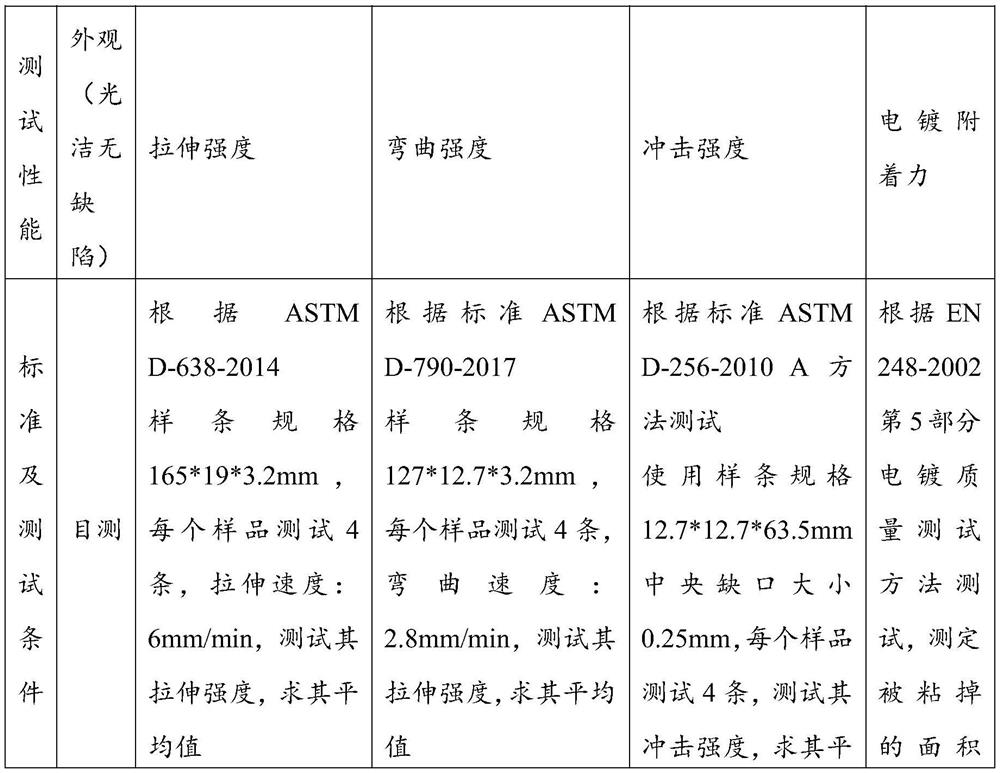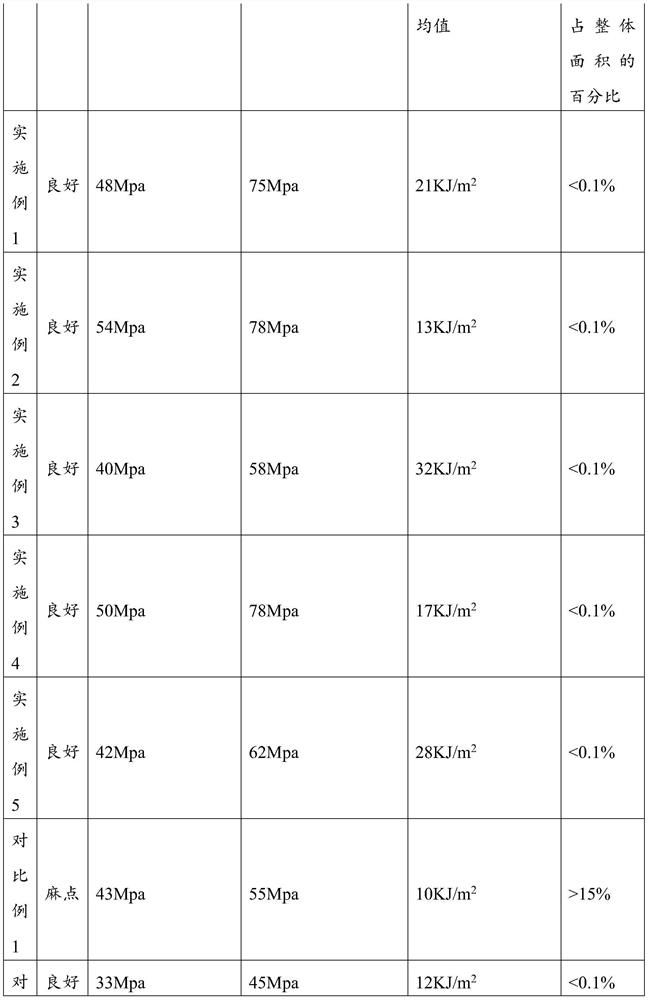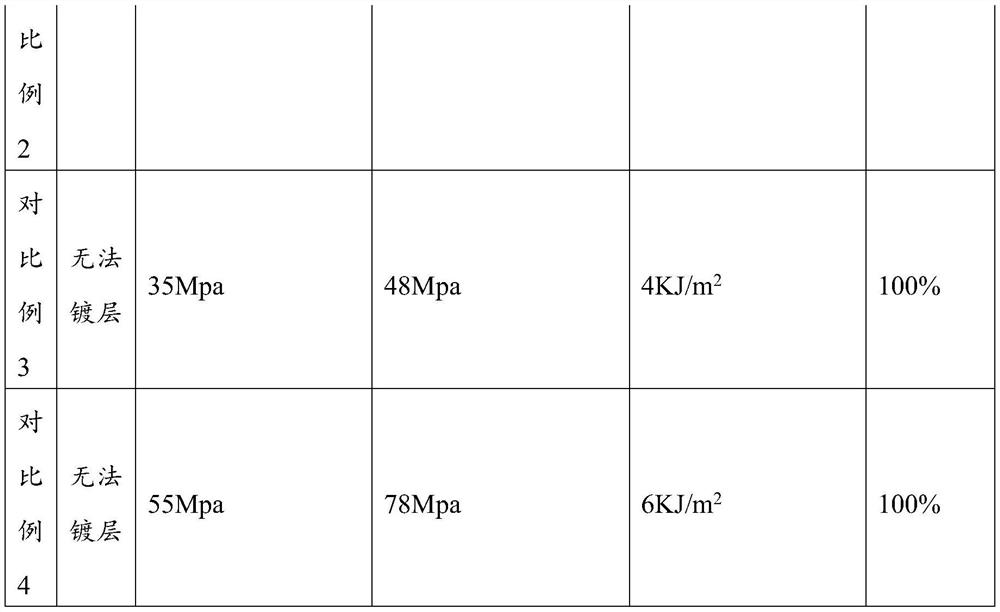A kind of polylactic acid resin and its preparation method and application
A technology of polylactic acid resin and emulsion, which is applied in the field of rubber resin, can solve the problems of reduced viscosity-average molecular weight, high strength loss, and high cost, and achieve the goals of improving impact resistance and bending resistance, enhancing phase interface interaction, and enhancing adhesion Effect
- Summary
- Abstract
- Description
- Claims
- Application Information
AI Technical Summary
Problems solved by technology
Method used
Image
Examples
Embodiment 1
[0027] A kind of polylactic acid (abbreviated as PLA) resin, its preparation steps are as follows:
[0028] 1) 150g GMA (glycidyl methacrylate), 55g water, 20g potassium stearate, 10g tert-dodecanethiol are added to the container and stirred to obtain GMA pre-emulsion;
[0029] 2) 750g of polybutadiene emulsion (polybutadiene emulsion refers to a butadiene self-polymerization emulsion with a solid content of 40wt%, a particle size of 300nm, and a pH of 11.0) was added to the reaction vessel, stirred and heated to 65°C;
[0030] 3) Slowly drop the pre-emulsion into the reactor, simultaneously drop 10 g of a 10 wt% potassium persulfate aqueous solution and 10 g of a 10 wt % sodium thiosulfate aqueous solution, and control the flow rate. The aqueous solution of sodium sulfate is added dropwise 0.5h after the pre-emulsification is completed to obtain a graft emulsion;
[0031] 4) 100g CaCl 2 Add 900g of water to dissolve to obtain a coagulation solution;
[0032] 5) Heat the co...
Embodiment 2
[0036] A kind of polylactic acid resin, its preparation step is as follows:
[0037] 1) 50g GMA, 145g water, 1g potassium stearate, 1g tert-dodecanethiol are added to the container and stirred to obtain GMA pre-emulsion;
[0038] 2) 800g of polybutadiene emulsion (polybutadiene emulsion refers to a butadiene self-polymerization emulsion with a solid content of 20wt%, a particle size of 100nm, and a pH of 13.0) was added to the reaction vessel, stirred and heated to 80°C;
[0039] 3) Slowly drop the pre-emulsion into the reactor, simultaneously drop 1 g of a 10wt% potassium persulfate aqueous solution and 1 g of a 10wt% sodium thiosulfate aqueous solution, control the flow rate, the pre-emulsion is added dropwise for 2h, the potassium persulfate aqueous solution, sulfuric acid The aqueous solution of sodium sulfate is added dropwise 0.5h after the pre-emulsification is completed to obtain a graft emulsion;
[0040] 4) Put 100g MgSO 4 Add 900g of water to dissolve to obtain a ...
Embodiment 3
[0045] A kind of polylactic acid resin, its preparation step is as follows:
[0046] 1) 200g GMA, 200g water, 50g potassium oleate, 10g tert-dodecanethiol are added to the container and stirred to obtain GMA pre-emulsion;
[0047] 2) 500g of polybutadiene emulsion (polybutadiene emulsion refers to a butadiene self-polymerization emulsion with a solid content of 60wt%, a particle size of 600nm, and a pH of 7.0) is added to the reaction vessel, stirred and heated to 50°C;
[0048] 3) Slowly drop the pre-emulsion into the reactor, drop 20g of 10wt% potassium persulfate aqueous solution and 20g of 10wt% sodium thiosulfate aqueous solution simultaneously, control the flow rate, the pre-emulsion is added dropwise for 8h, the potassium persulfate aqueous solution, sulfur The aqueous solution of sodium sulfate is added dropwise 0.5h after the pre-emulsification is completed to obtain a graft emulsion;
[0049] 4) Put 100g H 2 SO 4 Add 900g of water to dissolve to obtain a coagulati...
PUM
| Property | Measurement | Unit |
|---|---|---|
| particle diameter | aaaaa | aaaaa |
| bending strength | aaaaa | aaaaa |
| particle diameter | aaaaa | aaaaa |
Abstract
Description
Claims
Application Information
 Login to View More
Login to View More - Generate Ideas
- Intellectual Property
- Life Sciences
- Materials
- Tech Scout
- Unparalleled Data Quality
- Higher Quality Content
- 60% Fewer Hallucinations
Browse by: Latest US Patents, China's latest patents, Technical Efficacy Thesaurus, Application Domain, Technology Topic, Popular Technical Reports.
© 2025 PatSnap. All rights reserved.Legal|Privacy policy|Modern Slavery Act Transparency Statement|Sitemap|About US| Contact US: help@patsnap.com



